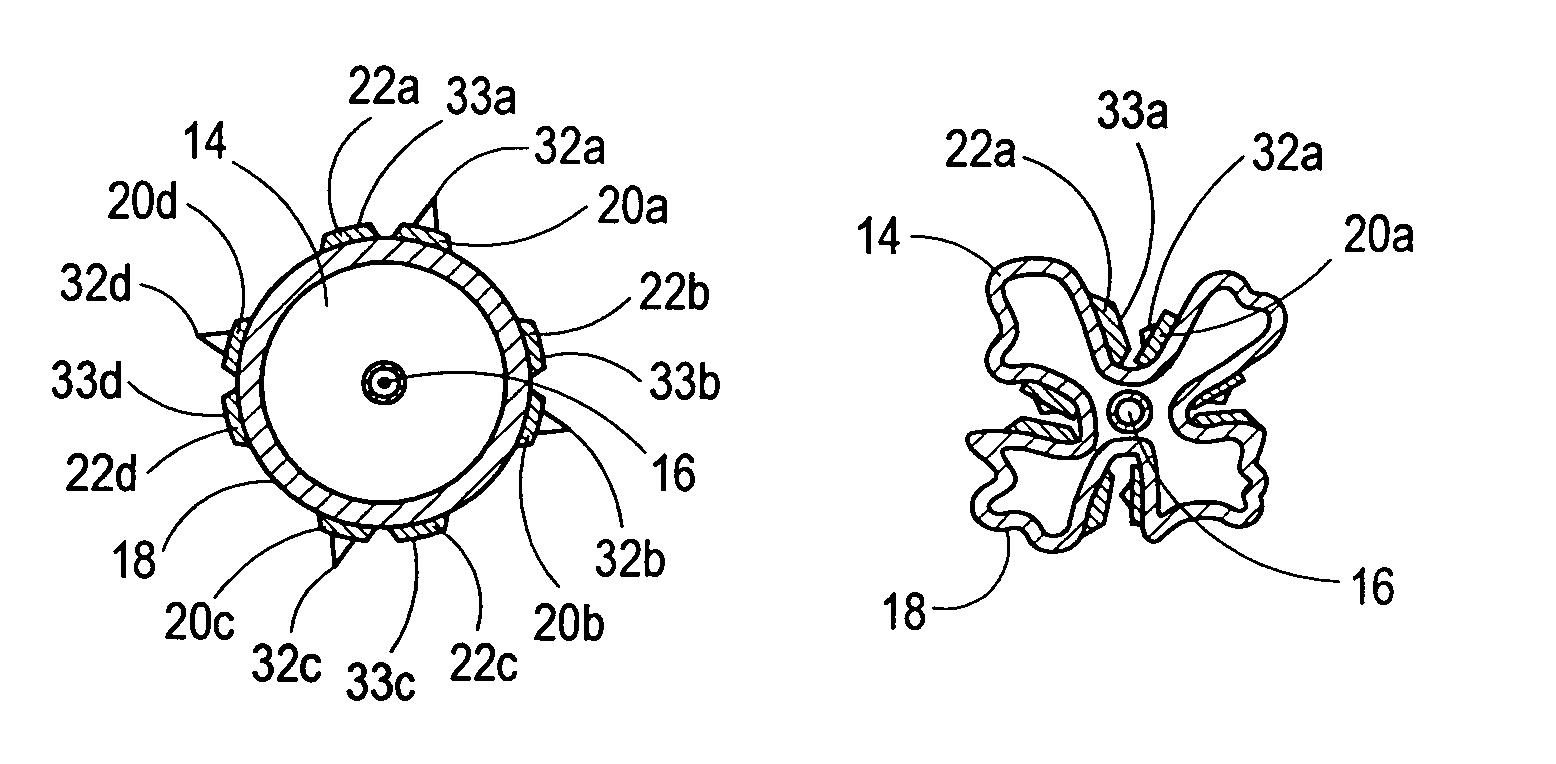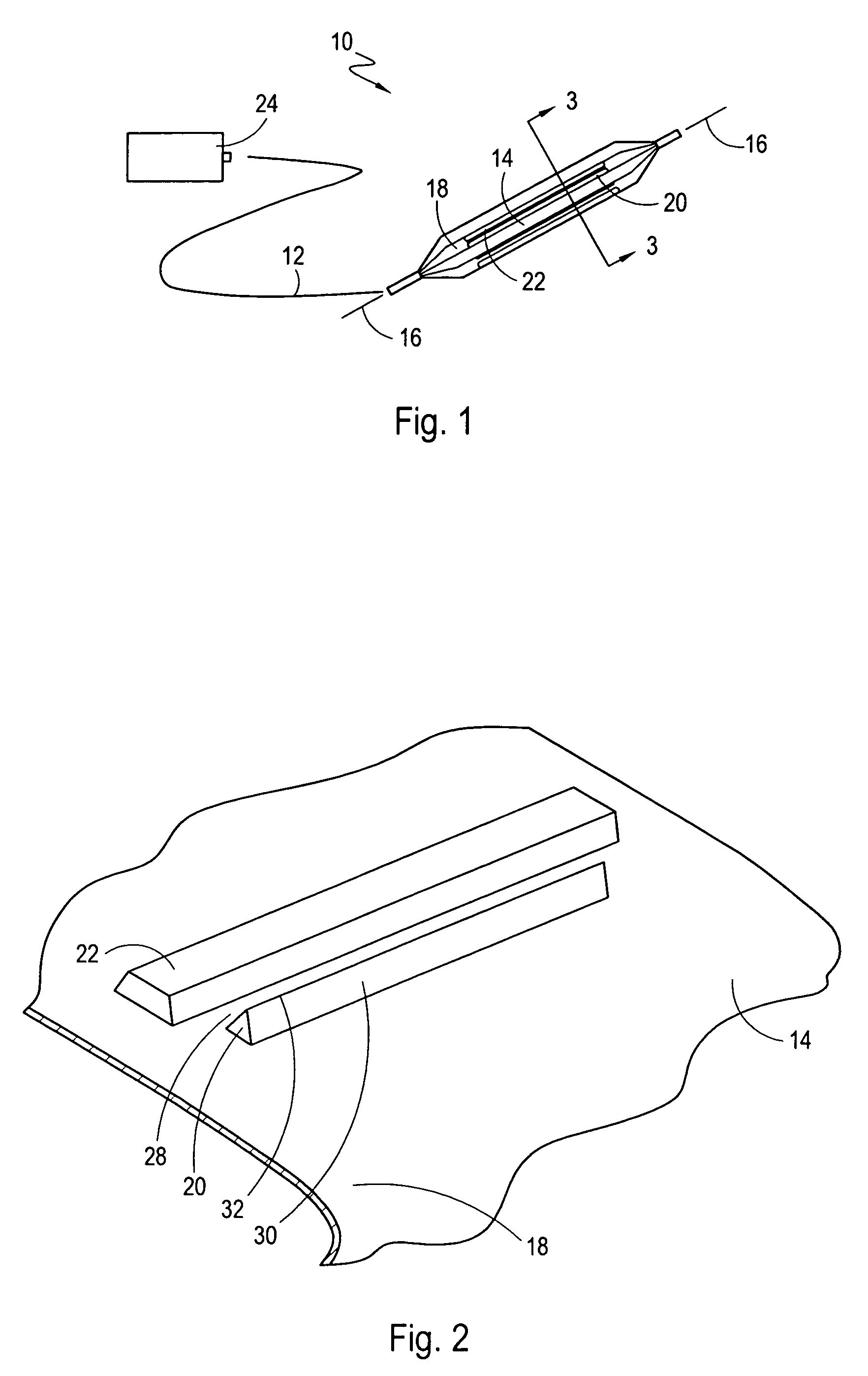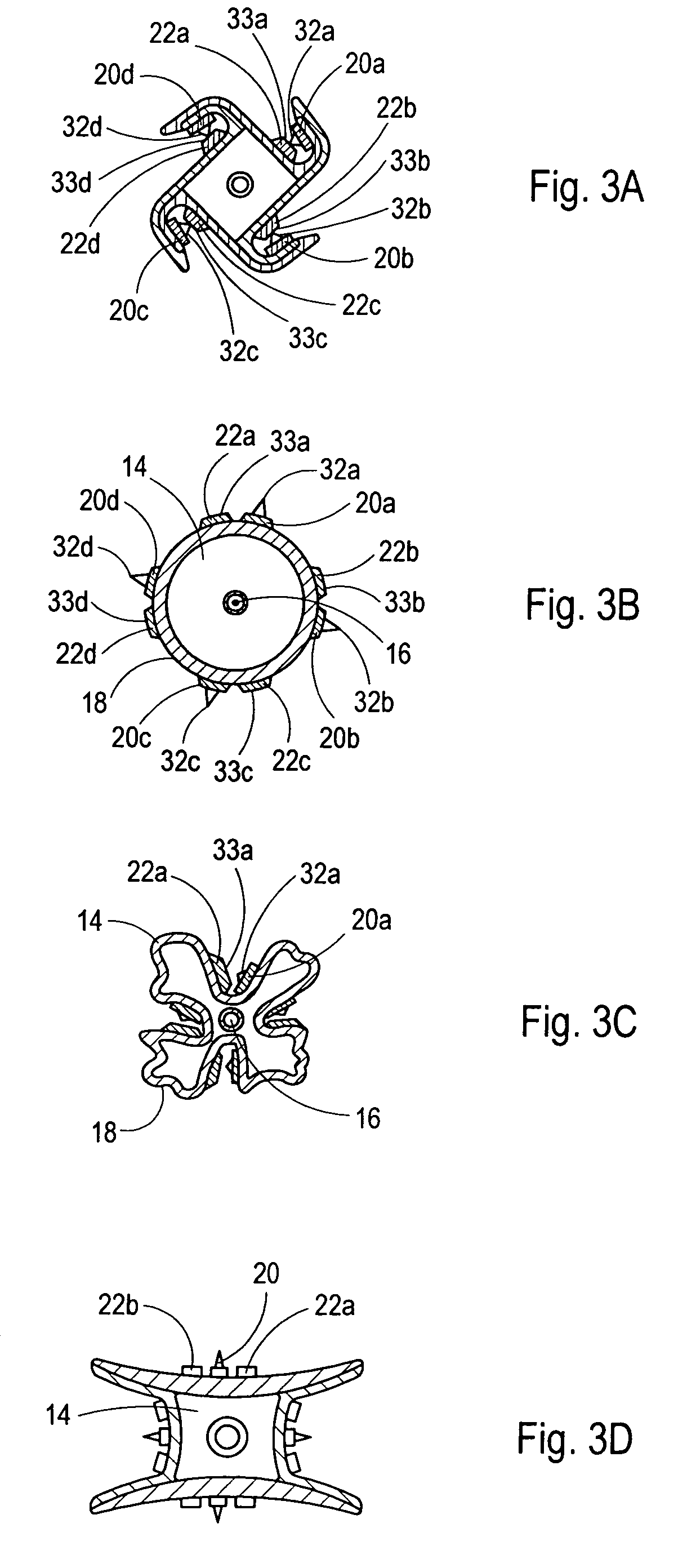Microsurgical balloon with protective reinforcement
a protective reinforcement and balloon technology, applied in the field of microsurgical balloons, can solve the problems of balloon damage, balloon damage, damage, etc., and achieve the effects of increasing the and increasing the longitudinal stiffness of the balloon
- Summary
- Abstract
- Description
- Claims
- Application Information
AI Technical Summary
Benefits of technology
Problems solved by technology
Method used
Image
Examples
Embodiment Construction
[0028]A system in accordance with the present invention is shown in FIG. 1 and is generally designated 10. As shown, the system 10 has a catheter 12, and an inflatable microsurgical balloon 14 that is attached to the catheter 12. The balloon 14 is an elongated, inflatable balloon 14 that defines a longitudinal axis 16. Mounted on the outer surface 18 of the balloon 14 is an incising component 20. As shown in FIG. 1, positioned substantially parallel to and juxtaposed with the incising component 20 is a protective pad 22. In the preferred embodiment of the present invention, the incising component 20 and the protective pad 22 are mounted on the outer surface 18 of the balloon 14 in a manner well known in the pertinent art, such as by adhesive bonding. The protective pad 22 may be manufactured from a substantially impenetrable or a semi-penetrable material. As further shown in FIG. 1, the system 10 includes an extracorporeal fluid pump 24 that is connected to the catheter 12. The extr...
PUM
 Login to View More
Login to View More Abstract
Description
Claims
Application Information
 Login to View More
Login to View More - R&D
- Intellectual Property
- Life Sciences
- Materials
- Tech Scout
- Unparalleled Data Quality
- Higher Quality Content
- 60% Fewer Hallucinations
Browse by: Latest US Patents, China's latest patents, Technical Efficacy Thesaurus, Application Domain, Technology Topic, Popular Technical Reports.
© 2025 PatSnap. All rights reserved.Legal|Privacy policy|Modern Slavery Act Transparency Statement|Sitemap|About US| Contact US: help@patsnap.com



